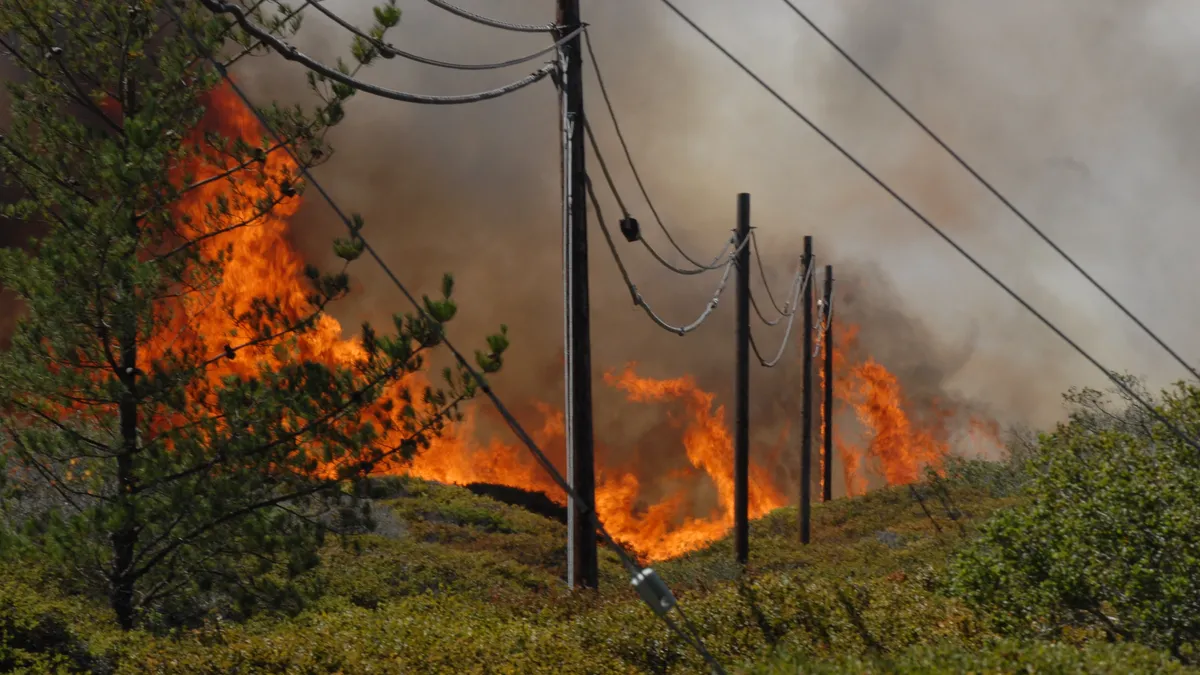Dive Brief:
-
Pacific Gas and Electric (PG&E) will file for Chapter 11 bankruptcy protection near the end of the month, the company announced Monday, as it attempts to deal with up to $30 billion of liabilities associated with the 2017 and 2018 wildfire seasons.
-
PG&E officials have said for months that the utility's wildfire liabilities outweigh its insurance coverage, and the company said the Chapter 11 process will "support the orderly, fair and expeditious resolution of its potential liabilities" while it and California regulators explore options to reorganize the company.
-
PG&E CEO Geisha Williams stepped down on Sunday and was replaced by General Counsel John Simon on an interim basis. Three other senior executives departed last week, and California's Attorney General has warned the utility could face murder or manslaughter charges if employees acted recklessly before the ignition of the Camp Fire in November, which killed at least 86.
Dive Insight:
PG&E's second bankruptcy protection proceeding in as many decades is imminent. Under California law, companies must give employees at least 15 days notice of a bankruptcy filing, and the utility told the Securities and Exchange Commission (SEC) to expect the filing "on or about Jan. 29."
California's head utility regulator had previously said that he did not want to see PG&E file for bankruptcy protection, saying the process could jeopardize reliable gas and power service. PG&E, however, told the SEC a Chapter 11 filing is "the only viable option to restore PG&E's financial stability to fund ongoing operations and provide safe service to customers."
"Our goal will be to work collaboratively to fairly balance the interests of our many constituents … while creating a sustainable foundation for the delivery of safe service to our customers in the years ahead," the company said in a statement. "The Chapter 11 process allows us to work with these many constituents in one court-supervised forum to comprehensively address our potential liabilities and to implement appropriate changes."
PG&E's stock dropped nearly 50% in pre-market trading following the announcement on Monday. It had lost more than two-thirds of its stock market value since November, when California fire officials first connected its equipment to the Camp Fire, the state's most deadly and destructive blaze on record.
PG&E had already been found responsible for 17 wildfires in 2017 and this month credit rating agencies Moody's and S&P downgraded the utility's debt to near-junk status. In November, the company withdrew its revolving credit lines, raising concerns it could file for bankruptcy.
In their SEC filing, PG&E officials said total liabilities for the two wildfire seasons could exceed $30 billion, not including "potential punitive damages, fines and penalties or damages related to future claims."
The company that emerges from PG&E's Chapter 11 process could be quite different from the one that filed it. In December, California regulators laid out a variety of avenues to reorganize PG&E in light of "serious safety problems with both its gas and electric operations," including the fires and a 2010 pipeline explosion in the Northern California community of San Bruno.
Options include splitting the utility's transmission and distribution businesses, spinning off its natural gas service, divesting its power generation, reorganizing the company into regional subsidiaries, or reforming PG&E into a publicly owned utility, among others.
The company has until Jan. 30 to file initial comments in the proceeding and last week regulators opened a second proceeding to determine how much of PG&E's wildfire costs can be absorbed by the company, and how much should be passed on to ratepayers.
In addition to its financial liabilities, PG&E also faces legal ramifications for the fires and pipeline accident.
While energy lawyers say murder or manslaughter charges for company officials are unlikely, court cases could result in expanded federal oversight of the utility or new safety directives. Last week, a federal district court judge said he may force the company to inspect its entire transmission system before the start of the next fire season in June.
PG&E will weather the court cases and Chapter 11 proceeding without its former CEO Williams, who was part of a small cohort of female utility leaders that includes Duke Energy's Lynn Good, El Paso Electric's Mary Kipp and PNM Resources' Pat Vincent-Collawn. PG&E said a search for a permanent replacement is underway.
PG&E's Chapter 11 filing will be its second since the turn of the century. In 2001, the company went through Chapter 11 reorganization after California's troubled electricity deregulation efforts resulted in blackouts and price spikes, straddling the utility with $9 billion in debt.
This post has been updated to include more information from PG&E's SEC filing.














